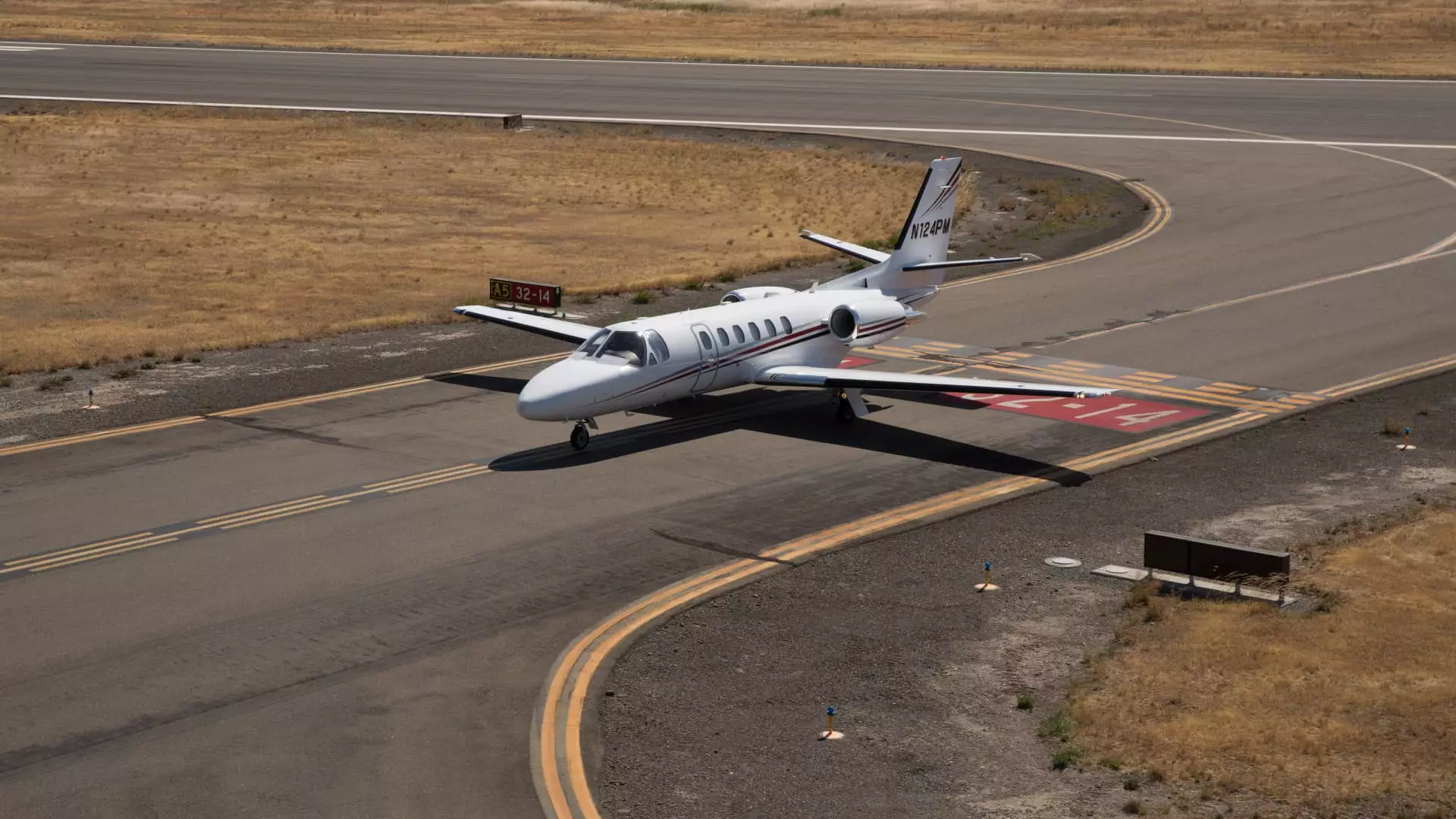The recent revelations from Barclays regarding the steep decline in business jet purchases should serve as a clarion call within the aviation industry. As consumer confidence tumbles to unprecedented lows, even the wealthiest travelers, traditionally less affected by economic downturns, have opted to pull back on extravagant expenditures—a clear indication that the once-reliable buoyancy of the luxury market is facing a devastating blow.
From a study conducted by Barclays, a staggering 49% downturn in interest for buying business jets was highlighted between March and the first half of April—a perilous shift that could reverberate throughout the entire sector. This decline is not merely statistical; it signals a loss of faith in economic growth, fueled by broader geopolitical tensions and the ongoing anxiety surrounding tariffs and trade regulations that loom over the aviation market.
Barclays’ Alarming Numbers
The Barclays Business Jet Indicator presents a composite score that relinquished a freefall from 52 to an unsettling 40, the most significant decline recorded since the onset of the COVID-19 pandemic. This score is not merely a number; it encapsulates the very essence of market sentiment. For anyone tracking this industry, a composite score in the low 40s denotes stagnation, as the dollar value of new orders continues to lag behind the orders manufacturers are fulfilling—a harbinger of impending financial complications for plane manufacturers.
Analyst David Strauss voiced his shock at the extent of the decline—a testament to a fear that has gripped buyers, who are reluctant to make purchases. As our economy becomes increasingly volatile, it is no wonder that those with disposable income—typically the bellwethers of such luxury markets—are exercising caution.
Tariff Fears Stifling Market Potential
The economic landscape’s shifting sands have raised questions about future demand, particularly around the chilling effects of tariffs. Respondents from the Barclays survey unanimously expressed their skepticism regarding aircraft demand, with an alarming 93% indicating that tariffs would negatively influence customer interest. The specter of tariffs is particularly concerning, as it not only threatens the stability of the aircraft market but also hinders growth within numerous operating businesses connected to the aviation sector.
These fears are corroborated by the pessimism felt in the secondary jet market, where about 67% of survey participants expect demand for used jets to diminish as well. The elements of uncertainty that surround tariffs and trade regulations have created an environment where opportunistic purchasing could potentially be seen as reckless, driving even potential buyers deeper into inaction.
A Ray of Hope Amidst the Gloom
However, amidst this bleak outlook, there may be a sliver of hope for business jet manufacturers. Recent moves within Congress indicate efforts to extent provisions in the Tax Cuts and Jobs Act, potentially restoring immediate deductions for business equipment. Should these legislative changes come to fruition, it may catalyze a resurgence of buying activity, offering a much-needed lifeline to an industry grappling with the weight of uncertainty.
This initiative could serve to reinvigorate confidence among potential buyers who have postponed significant purchases due to financial apprehensions. By reinstating the capacity for businesses to deduct purchases immediately, it aligns financial incentives for companies to invest in new aircraft.
Impacts of Evolving Market Trends
Navigating this uncertain economic landscape requires acute awareness from both consumers and manufacturers. The interlacing of consumer behavior and broader economic trends creates nuanced challenges that, when correctly interpreted, can usher in opportunities for recovery and growth. The potential adjustments in legislation and the recognition of the current consumer climate may influence a more favorable trajectory in demand for business jets.
The aviation industry stands at a crossroads: will it continue to embrace its ostentatious allure amidst mounting fears of economic stagnation, or will it adapt to the more pragmatic behaviors that many consumers are now adopting? Businesses that can swiftly pivot to meet these evolving trends will be better positioned to weather the impending storm, while those remaining entrenched in past anomalies may find themselves grounded for good.

